Citroën Ami One considers the future of the urban commute
An all-electric car made from novel sustainable materials
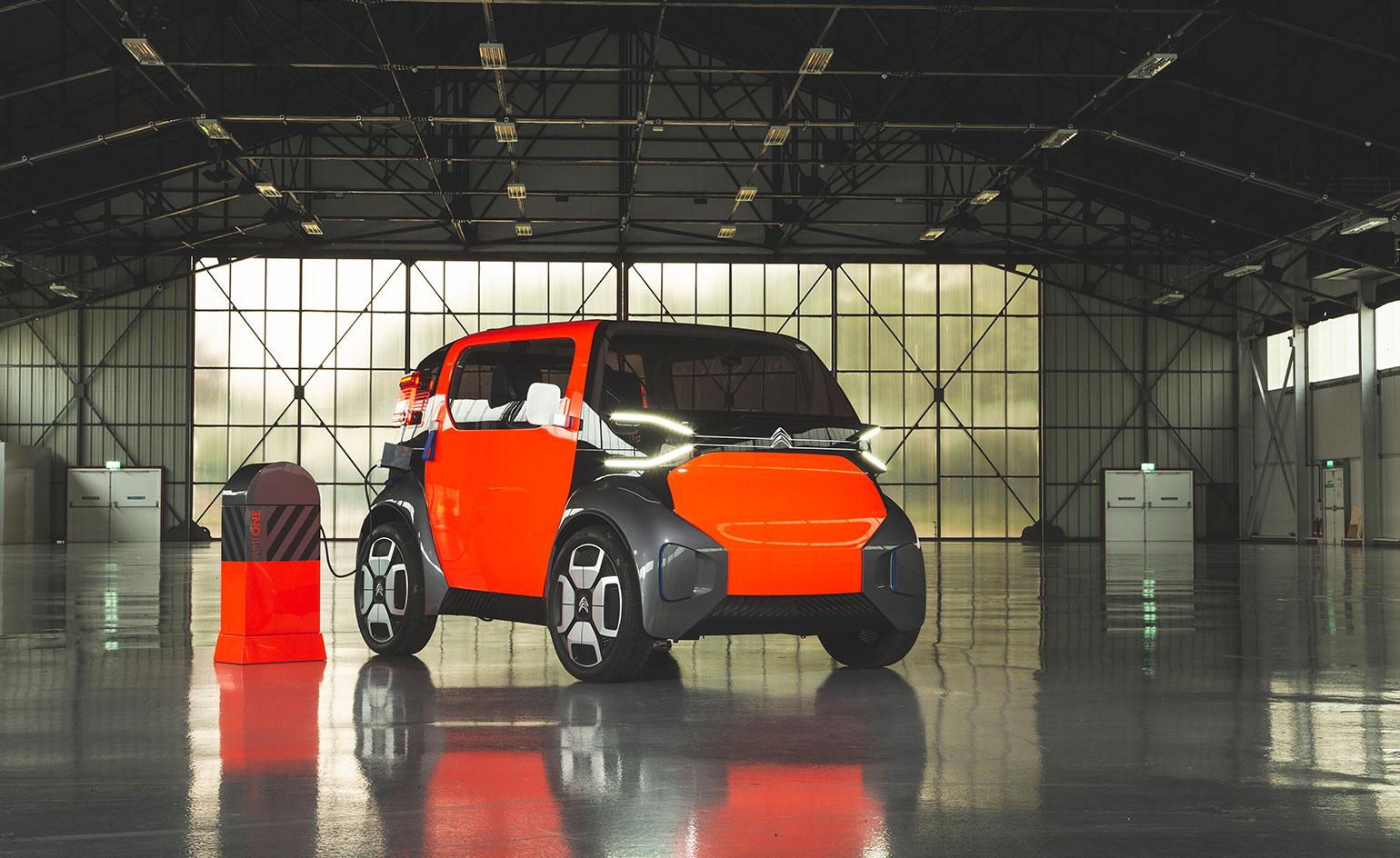
In the early sixties, Citroën produced a car name Ami. It was conceived as a more adult and urban alternative to the French marque’s popular tiny 2CV. The Ami 6 and 8 ran for two generations, and were nicknamed 3CV for their boosted power. Today we’re about to experience an entirely different ‘ami’. In the spirit of both cars, Citroën is presenting the Ami One, a concept conceived to gauge the possibilities of the urban commute in a car with an approximate footprint of the 2CV, but with a thoroughly modern outlook.
The original deux chevaux was famously designed to help motorise French farmworkers in the 1930s, a time when horses and carts were still the primary mode of rural transport. The Ami One conceptually does the same, albeit for the modern, metropolitan worker. The study vehicle offers a glimpse into how mobility might look in our ever-sprawling cities in the not too distant future. Citroën says the technology is all possible today, and that a similar mobility solution could possibly happen in the next five years.
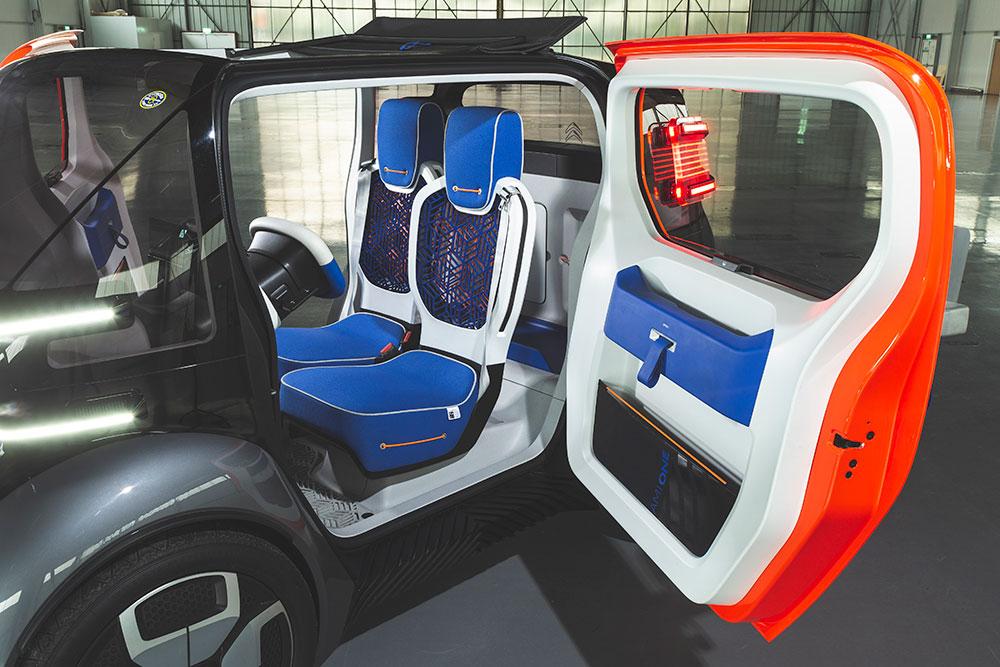
So, what is it like to experience? The car we’re testing is purely a prototype, so the feel and drive are not as polished as a fully-fledged production car. That said, the short run in the confines of a controlled environment is fun and easy – everything on this little friend is considered and intuitive.
The Ami One is fully electric, and it seats two adults comfortably offering plenty of room in front of the passenger and in the rear for bags and shopping. The design is more akin to that of a personal gadget than a motor car, with a simple cubic form in which you sit upright and tall. Some exciting ideas for automotive come into play too. For instance, the doors are made of identical panels – rear-hinged for the driver and front-hinged for the passenger – to minimise the number of parts produced and cut manufacturing costs. Similarly, the front and rear bumpers are the same parts – only positioned differently. Then, for a dose of extra cost-cutting and an unfussy touch, the Citroën double chevron logo is simply a flat sticker.

‘We debated this at first,’ says Pierre Leclercq Citroën’s new design director as he sits in the passenger seat, ‘but it felt like the right thing to do with this car. Our design approach was to be restrained, and we looked to product design and manufacturing processes for this car’. The Ami interior continues this modest approach, pared down to the basic needs of short distance travel, without looking too austere. This is mainly due to the pop colour scheme and modern textiles. Leclercq says novel sustainable materials will be explored if this car is to get the green light. The driver seat adjusts back and forth, and tilts to make room for luggage (a set of which is designed by the team to blend with the interior). There are no electric window winders; you have to manually operate these, the slim wing mirrors and canvas roof.
The Ami One is designed to be a shared, hop-on-and-off, or privately-owned transport idea for young urbanites. Your smartphone essentially acts as the central interface – place it behind the steering wheel and it provides the info and music through the Bluetooth speaker. If you change car, your settings come with you. Citroën has rightly identified that the next generation is unlikely to love the motor car as much as their forebears. What matters is simplicity and personality. As a hire car, the Ami One is easy to clean and maintain, with on-board elements made of materials inspired by garden furniture and public transport. If, however, someone wishes to buy an Ami One for themselves, there would be the option to remove these panels and add your own personal touch; Leclercq is keen to encourage this personal artistic freedom.
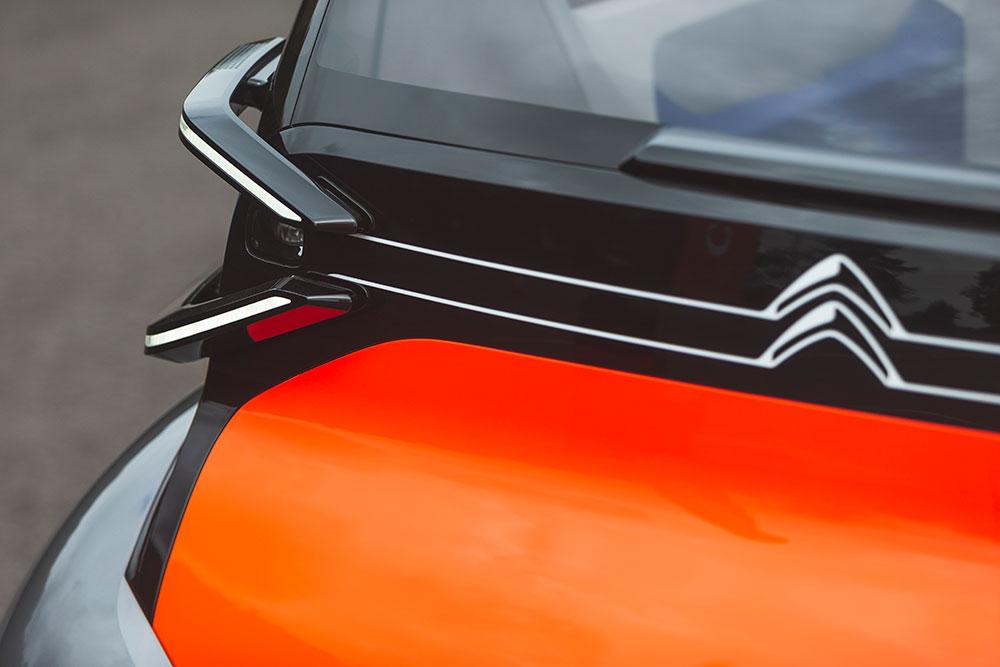
The mechanics are also straightforward. The battery sits under the occupants’ floor and a small electric motor drives the rear wheels. Electric range, we are told, is somewhere around 100 miles with charging predicted to take a couple of hours. What’s more, the Ami conforms to quadricycle regulations, which means it requires the same licensing as a scooter, and with a top speed of 28mph, in some countries it can be driven by under seventeens without a driving licence.
There’s something else. As we start to drive, the Ami One ‘hums’ ‘Free to Feel’, a track composed by Alex Jaffray and Gilles Facérias especially for this car. With new regulation insisting that silent electric cars have a sound to warn other road users, Leclercq says Citroën is exploring its sonic options for an electrified future. Surprisingly, the subtle track seems to work well.
Alongside parent company Groupe PSA, Citroën is fully committed to electrification. This Ami One has egalitarian ambitions. It provides mobility for young urbanites in any city around the world. The Ami has some maturing to do, but as a concept it is an inspired product, a 2CV for a new generation of drivers.
INFORMATION
Receive our daily digest of inspiration, escapism and design stories from around the world direct to your inbox.
A writer and editor based in London, Nargess contributes to various international publications on all aspects of culture. She is editorial director on Voices, a US publication on wine, and has authored a few lifestyle books, including The Life Negroni.
-
 Click to buy: how will we buy watches in 2026?
Click to buy: how will we buy watches in 2026?Time was when a watch was bought only in a shop - the trying on was all part of the 'white glove' sales experience. But can the watch industry really put off the digital world any longer?
-
 Don't miss these art exhibitions to see in January
Don't miss these art exhibitions to see in JanuaryStart the year with an inspiring dose of culture - here are the best things to see in January
-
 Unmissable fashion exhibitions to add to your calendar in 2026
Unmissable fashion exhibitions to add to your calendar in 2026From a trip back to the 1990s at Tate Britain to retrospectives on Schiaparelli, Madame Grès and Vivienne Westwood, 2026 looks set to continue the renaissance of the fashion exhibition
-
 Rivian hits Miami Art Week to release R1S Quad Miami Edition, a new colour and a scent
Rivian hits Miami Art Week to release R1S Quad Miami Edition, a new colour and a scentVivid sights and evocative smells are part of Rivian’s quest to humanise its all-electric SUVs
-
 RBW EV brings a much-loved classic sports car aesthetic into the modern era
RBW EV brings a much-loved classic sports car aesthetic into the modern eraThe RBW Roadster and GT hark back to a golden age of sports car design. Under the skin, these British-built machines feature bespoke all-electric running gear
-
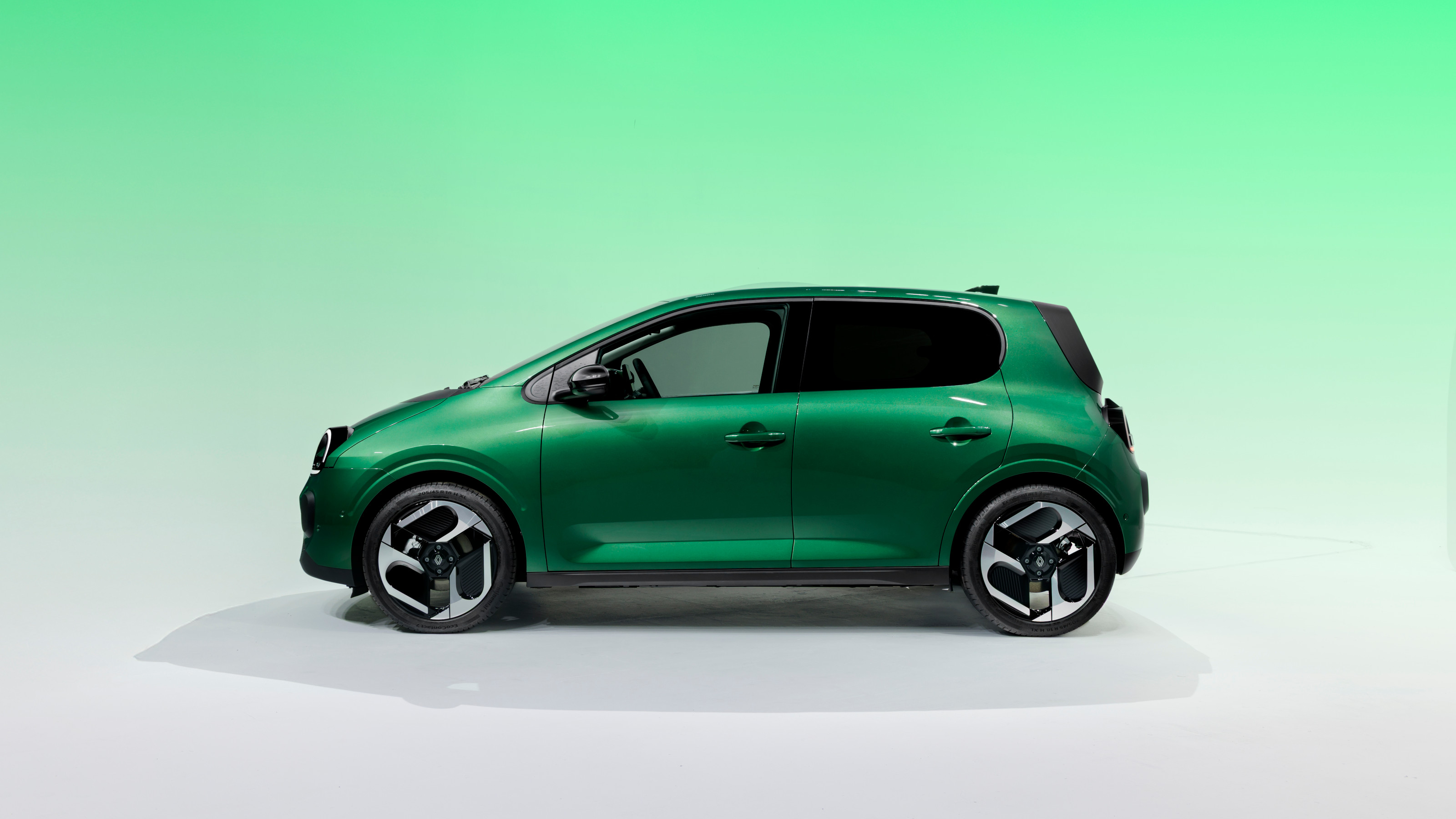 All hail the compact new Renault Twingo E-Tech – the city car is back in style
All hail the compact new Renault Twingo E-Tech – the city car is back in styleRenault continues to pay homage to its heritage by combining it with 21st-century technology. The new Twingo E-Tech is another winner
-
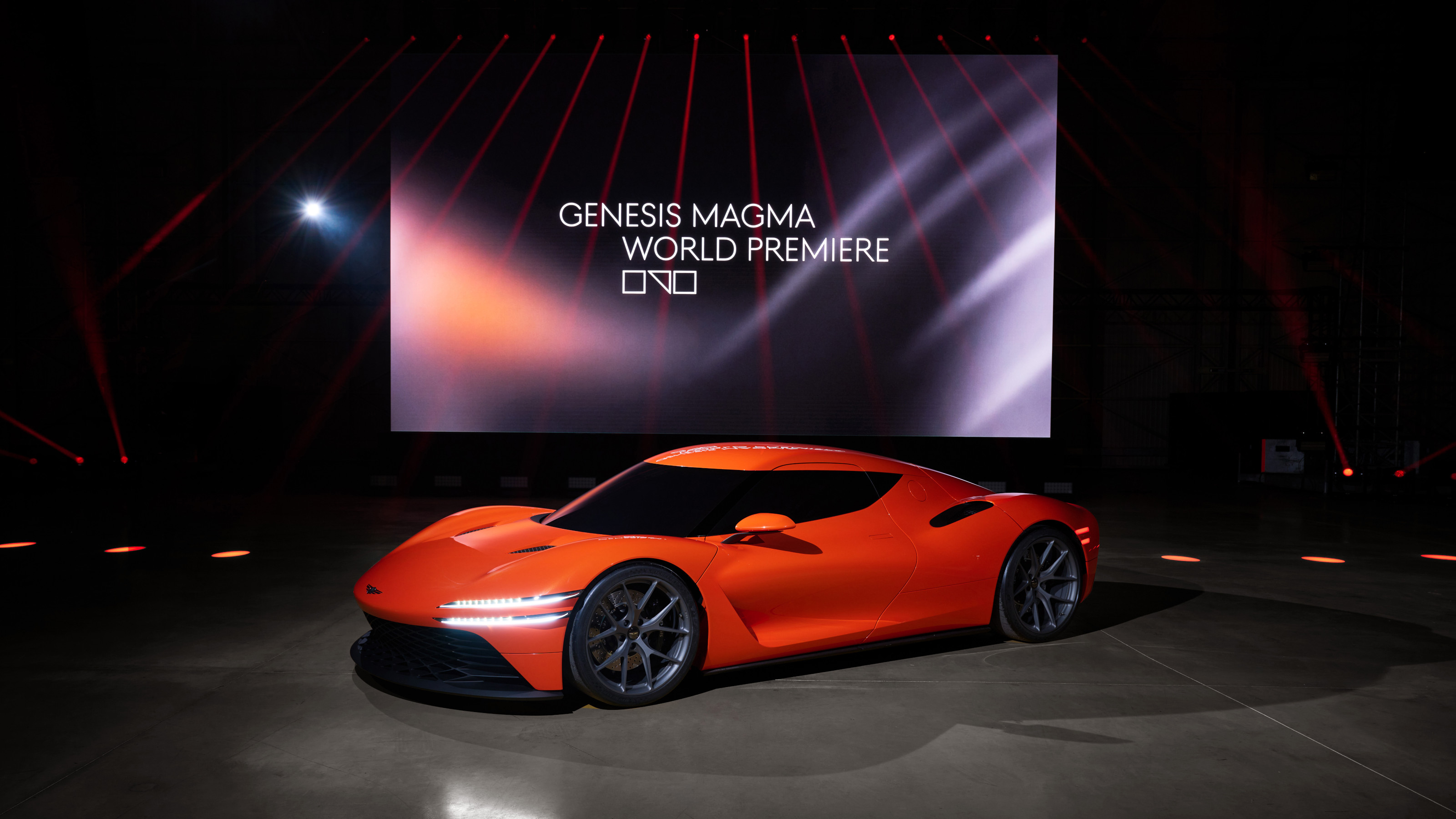 Genesis turns up the heat with its new Magma performance sub-brand
Genesis turns up the heat with its new Magma performance sub-brandGenesis has revealed the hot new GV60 Magma and striking Magma GT Concept in its quest to own luxury performance
-
 Around London in sybaritic silence with the majestic all-electric Lunaz Phantom V
Around London in sybaritic silence with the majestic all-electric Lunaz Phantom VClassic electrifier Lunaz has turned its skilled hands to the Rolls-Royce Phantom V. We sample the ultimate in zero-emission luxury on the streets of London
-
 Avatr Vision Xpectra concept transforms cars into ‘emotionally intelligent companions’
Avatr Vision Xpectra concept transforms cars into ‘emotionally intelligent companions’Revealed in Munich, electric car maker Avatr’s futuristic Vision Xpectra is a car that is not only beautiful, but a true form of ‘emotive luxury’
-
 Dacia wants to make small cars great again – all hail the new Hipster Concept
Dacia wants to make small cars great again – all hail the new Hipster ConceptThe best way to minimise energy use in all its forms is to downsize. The Dacia Hipster Concept is a smart way of making a practical car way more pint-sized
-
 The Vanderhall Brawley GTS is a compact but mighty electric off-roader
The Vanderhall Brawley GTS is a compact but mighty electric off-roaderDeliveries of Vanderhall’s Brawley GTS have started, bringing zero-emission trail driving to enthusiasts across America